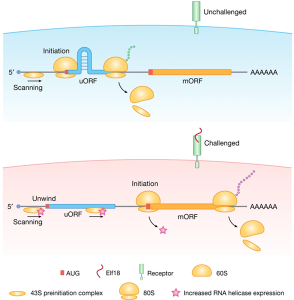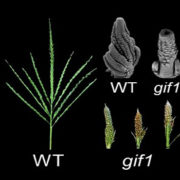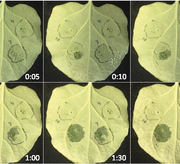RNA hairpins underlie preferential use of translation start codons
 Gene expression regulation facilitates environmental adaptation and survival. This recent paper by Xiang et al. focuses on the regulation of translation, in particular on the mechanism underlying the generation of different translation products in different conditions. In addition to the main start codon (mAUG) and its associated open reading frame (mORF), mRNA molecules can contain upstream start codons (uAUGs) that provide alternative translation start sites that have been shown to be important in stress responses. The authors focused on pathogen-triggered immunity in Arabidopsis thaliana. Many transcripts associated with defense responses contain uAUGs that are bypassed during pathogen response to allow translation from the mAUG. Put in simpler terms, upon immunity response induction, the main AUGs of these environmental stress response genes are chosen for translation, while under normal conditions their uAUGs are preferentially used. The authors found that this change in AUG usage is due to the formation under unstressed conditions of RNA hairpins downstream of uAUGs, which prevent translation from the mAUG. The authors propose that hairpin dissolution is regulated by an increased expression of RNA helicases upon immunity induction, which unwind the RNA hairpin and allow translation of the mORF. Crucially, these helicases have orthologs in yeast and humans, suggesting that this mechanism is common to other eukaryotes. This study tackles a fundamental biological question in Arabidopsis thaliana to reveal a general gene regulation mechanism beyond plants. The authors also provide tools to use this knowledge to design inducible translational reporters to fine-tune gene expression. (Summary by Laura Turchi @turchi_l) Nature 10.1038/s41586-023-06500-y
Gene expression regulation facilitates environmental adaptation and survival. This recent paper by Xiang et al. focuses on the regulation of translation, in particular on the mechanism underlying the generation of different translation products in different conditions. In addition to the main start codon (mAUG) and its associated open reading frame (mORF), mRNA molecules can contain upstream start codons (uAUGs) that provide alternative translation start sites that have been shown to be important in stress responses. The authors focused on pathogen-triggered immunity in Arabidopsis thaliana. Many transcripts associated with defense responses contain uAUGs that are bypassed during pathogen response to allow translation from the mAUG. Put in simpler terms, upon immunity response induction, the main AUGs of these environmental stress response genes are chosen for translation, while under normal conditions their uAUGs are preferentially used. The authors found that this change in AUG usage is due to the formation under unstressed conditions of RNA hairpins downstream of uAUGs, which prevent translation from the mAUG. The authors propose that hairpin dissolution is regulated by an increased expression of RNA helicases upon immunity induction, which unwind the RNA hairpin and allow translation of the mORF. Crucially, these helicases have orthologs in yeast and humans, suggesting that this mechanism is common to other eukaryotes. This study tackles a fundamental biological question in Arabidopsis thaliana to reveal a general gene regulation mechanism beyond plants. The authors also provide tools to use this knowledge to design inducible translational reporters to fine-tune gene expression. (Summary by Laura Turchi @turchi_l) Nature 10.1038/s41586-023-06500-y







